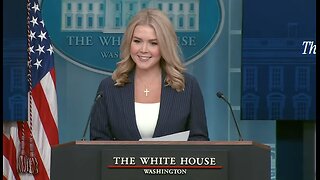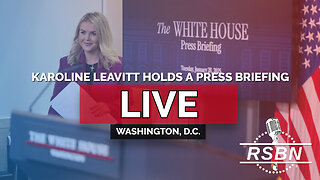Premium Only Content

Operation Sandman | The Gold Standard 2425
https://www.midasgoldgroup.com/
In this episode of The Gold Standard, we dive deep into the mysterious and alarming topic of Operation Sandman. Join us as we uncover the intricate web of global economic developments that could shape the future of our world.
To fully grasp the gravity of Operation Sandman, it’s essential to revisit a couple of pivotal moments in our economic history. First, there was the Bretton Woods Agreement, which happened in 1944 and set the stage for a new global financial order by pegging international currencies to the US dollar, which was convertible to gold. This system aimed to promote stability and rebuild economies post-World War II. Second, in 1971, President Richard Nixon ended Bretton Woods by taking the US dollar off the gold standard. This decision allowed the dollar to float freely and marked a significant shift in global economic policy.
The dollar’s role as the world’s primary reserve currency offers significant advantages to Americans, primarily by helping to keep interest rates low. Foreign countries purchase United States Treasury debt not only as a secure investment but also because dollar-denominated assets are the most reliable way to hold foreign exchange reserves. This consistent demand for the dollar allows the US to borrow at lower costs, reducing interest rates for consumers and businesses. However, losing this prestigious position could have serious repercussions. If the dollar’s dominance wanes, demand for dollar-denominated assets would decrease, potentially leading to higher interest rates and increased borrowing costs.
The health of the US bond market is under significant strain, mainly due to the escalating national debt, which currently exceeds $34.5 trillion, equating to about $102,562 per citizen. This massive debt burden impacts the bond market by increasing the supply of bonds, which leads to higher yields and lower bond prices. This risk is exacerbated by the national debt-to-GDP ratio, which is over 123% today compared to 35.54% in 1980 and 54.80% in 2000. As federal spending continues to outpace revenue, the bond market faces additional pressures. The projection that the debt-to-GDP ratio will exceed 150% by 2028 suggests that borrowing costs will rise further, making it harder for Washington to meet its financial obligations and lead to higher interest rates across the board.
The BRICS nations, comprising Brazil, Russia, India, China, and South Africa serve as a collective force for the Global South, aiming to reshape the global economic landscape. This coalition has grown as more countries, frustrated by the perceived economic tyranny and weaponization of the US dollar, seek alternatives. The recent inclusion of other nations underscores the group’s expanding influence. One goal of BRICS is the creation of a new currency intended to facilitate international trade and reduce dependence on the US dollar. This move is seen as a strategic effort, akin to Operation Sandman, to diminish the dollar’s dominance by coordinating the dumping or selling of US Treasuries. The implications of such actions could drastically reduce demand for dollar-denominated assets, leading to significant economic shifts.
Project Enbridge is a Central Bank Digital Currency (CBDC) initiative aimed at transforming international trade by moving away from dollar settlements to transactions in local digital currencies. Unlike traditional trade settled in US dollars, Project Enbridge facilitates transactions using digital currencies backed by local resources, populations, and gold, enabling participating nations to trade more efficiently and with greater sovereignty.
“Think about the money you have. If you consider that as fake money, which I do, how could you possibly turn some of that into real money?”
—Ken Russo
As things unfold, let’s remember the definition of real money. Real money can function as a medium of exchange, a unit of account, and a store of value. Unlike fiat currencies issued by governments and have value because of legal decree, real money should ideally possess intrinsic value. Gold and silver retain their worth over time, providing financial security and stability in economic uncertainty, geopolitical strife, and monetary policy shifts. Their intrinsic value and historical significance make them trusted assets that can protect wealth across generations.
______________________________________________________________________________________________
Listen to The Gold Standard: https://www.midasgoldgroup.com/gold-standard-radio-show/
Gold IRA: https://www.midasgoldgroup.com/gold-ira/
Invest in Gold: https://www.midasgoldgroup.com/buy-gold/
Guide to Owning Bullion & Coins: https://www.midasgoldgroup.com/bullion-guide/
Read the latest precious metals news: https://www.midasgoldgroup.com/news/
-
 25:08
25:08
Midas Gold Group
5 months agoIf the System Collapsed, What Would Happen to My Money? | The Gold Standard 2432
50 -
 LIVE
LIVE
Revenge of the Cis
3 hours agoLocals Episode 196: Aloha
419 watching -
 1:05:34
1:05:34
In The Litter Box w/ Jewels & Catturd
22 hours agoReturn to Sender | In the Litter Box w/ Jewels & Catturd – Ep. 740 – 2/12/2025
49.6K26 -
 1:32:17
1:32:17
The Quartering
4 hours agoDOGE Storms the Department of Education, Trump FIRES USAID head, and Teacher freed from Russia
95.4K44 -
 59:57
59:57
The White House
5 hours agoPress Secretary Karoline Leavitt Briefs Members of the Media, Feb. 12, 2025
224K236 -
 LIVE
LIVE
John Crump Live
4 hours agoBreaking Down The J6 Pardons With The J6 Pardon Project
144 watching -
 1:09:47
1:09:47
Tucker Carlson
4 hours agoKen Paxton: How Soros Protects Drug Cartels, Being Blacklisted by Fox News, and the Laken Riley Act
157K120 -
 1:23:49
1:23:49
Film Threat
8 hours agoCAPTAIN AMERICA: BRAVE NEW WORLD REVIEW (NON-SPOILER) | Hollywood on the Rocks
16.1K4 -
![[Ep 607] Constitutional Crisis! There Is No Proof! AAARRRGG! – Leftist Lunacy & Why It Will Fail](https://1a-1791.com/video/fwe2/bb/s8/1/3/0/u/O/30uOx.0kob-small-Ep-607-Constitutional-Crisi.jpg) LIVE
LIVE
The Nunn Report - w/ Dan Nunn
2 hours ago[Ep 607] Constitutional Crisis! There Is No Proof! AAARRRGG! – Leftist Lunacy & Why It Will Fail
326 watching -
 3:19:53
3:19:53
Right Side Broadcasting Network
7 hours agoLIVE REPLAY: White House Press Secretary Karoline Leavitt Holds a Press Briefing - 2/12/25
190K67